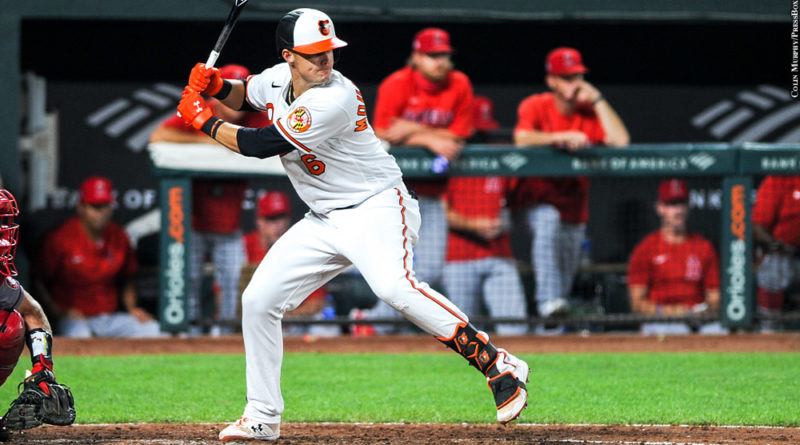Fantasy owners spent the entire month of March studying depth charts and debating which players to take in their drafts. After a shortened spring training due to the lockout, the regular season began April 7. This does not mean the hard work is over.
Drafting a quality team is critical for fantasy owners, but roster maintenance throughout the next five months is just as important in setting yourself up for a chance to win a championship.
Here are a few tips to remember throughout the season that will help give you the edge against your competition.
1. Fantasy baseball is a marathon, not a sprint.
The biggest challenge in fantasy baseball is to exercise patience and not overreact. This is what separates fantasy baseball from fantasy football. After one week of fantasy football, owners are ready to dump half their team, but that sort of Monday-morning quarterbacking is more acceptable because the season is so short.
However, the fantasy baseball season is long, and it’s a grind. This is not to scare you off, it’s just the reality. You need to know what you are getting yourself into during the next several months.
For example, in 2021, Orioles first baseman Ryan Mountcastle finished April hitting .198 with only one home run. By season’s end, Mountcastle had hit .255 with 33 home runs. The first baseman was a borderline major leaguer in the first month but was one of the best hitters in baseball in the final five.
It’s a balance of holding on to a player too long or moving on too early. As a benchmark, Memorial Day is usually when I really start making the tough decisions of moving on from a player, especially those who were drafted in the early rounds.
2. Stay active on the waiver wire.
The draft is about setting a foundation for your team that will allow you to compete for a championship. However, not everything goes as planned. Players will get hurt, demoted to the minors or struggle for long enough periods that we have to move on.
The waiver wire is one of the most important aspects of fantasy sports, as it helps replenish our roster and address the weaknesses we have. Our goal is to always acquire players who will help in multiple categories, but that doesn’t always happen. If we notice we’re weak in the stolen-base category, we may have to reach on a player who will help in that category during the season to give our team a boost.
Streaming pitchers is one of the more popular strategies in fantasy baseball and one that can be very effective. The goal is to find a pitcher who has a great matchup and acquire them off the waiver wire. I would recommend using this strategy after we get a large enough sample size of which teams have bad offenses. This will also allow us to see where our weaknesses are in the pitching categories.
One of the draft strategies I advised was to not invest heavily in closers, as too many teams are going with a committee and the closers who do have a secure role cost too much on draft day. We may not win or come near the top of every category, but we shouldn’t punt categories. If we’re not going to draft many closers but still don’t want to punt the category, we will have to attack the category on the waiver wire.
Riding the hot hand is also important on the offensive side, too, as hitters go through two- to three-week stretches when they are constantly on base. The key is acquiring that hitter at the beginning of their hot streak and not the end. It’s also important to remember that we don’t have to keep players for the entire season. If their hot streak is over, cut them and find the next guy who can give us a boost.
A good strategy is also to identify hitters who will be traveling to strong offensive environments like Coors Field in Colorado, Great American Ball Park in Cincinnati or Camden Yards in Baltimore. If we can add them to our team for a few games and they have a big series because of the stadiums they are playing in, it just adds to our team in the long run.
3. Pay attention to two-start pitchers in weekly leagues.
If you have to set your lineup for the week on Sunday night or Monday morning, you need to pay attention to which pitchers on your roster have two starts for the upcoming week. It’s good to have two-start pitchers because you get the chance to rack up stats for your team, especially if you are playing in a head-to-head format.
However, if you know those pitchers’ two starts are against quality offensive teams, it isn’t the worst idea to bench them for the week so they don’t hurt your team. The strategy in fantasy baseball is what makes this game so fun.
4. Sign up for lineup alerts.
I can’t stress just how important this is for the long-term success of a fantasy season. Setting your lineup in the morning only to find out a player was out of the lineup that night is frustrating and puts you behind the curve.
Twitter is a great tool to find out if your players are in the lineup that day, and many of the fantasy baseball sites, like ESPN, Yahoo! Sports and CBS, have apps that will alert you when a player is out.
This is crucial, especially when life takes over during the summer and on weekends. Again, fantasy baseball is all about consistency, and these little moves add up during the course of a season and will benefit you in the long run.
Photo Credit: Colin Murphy/PressBox

